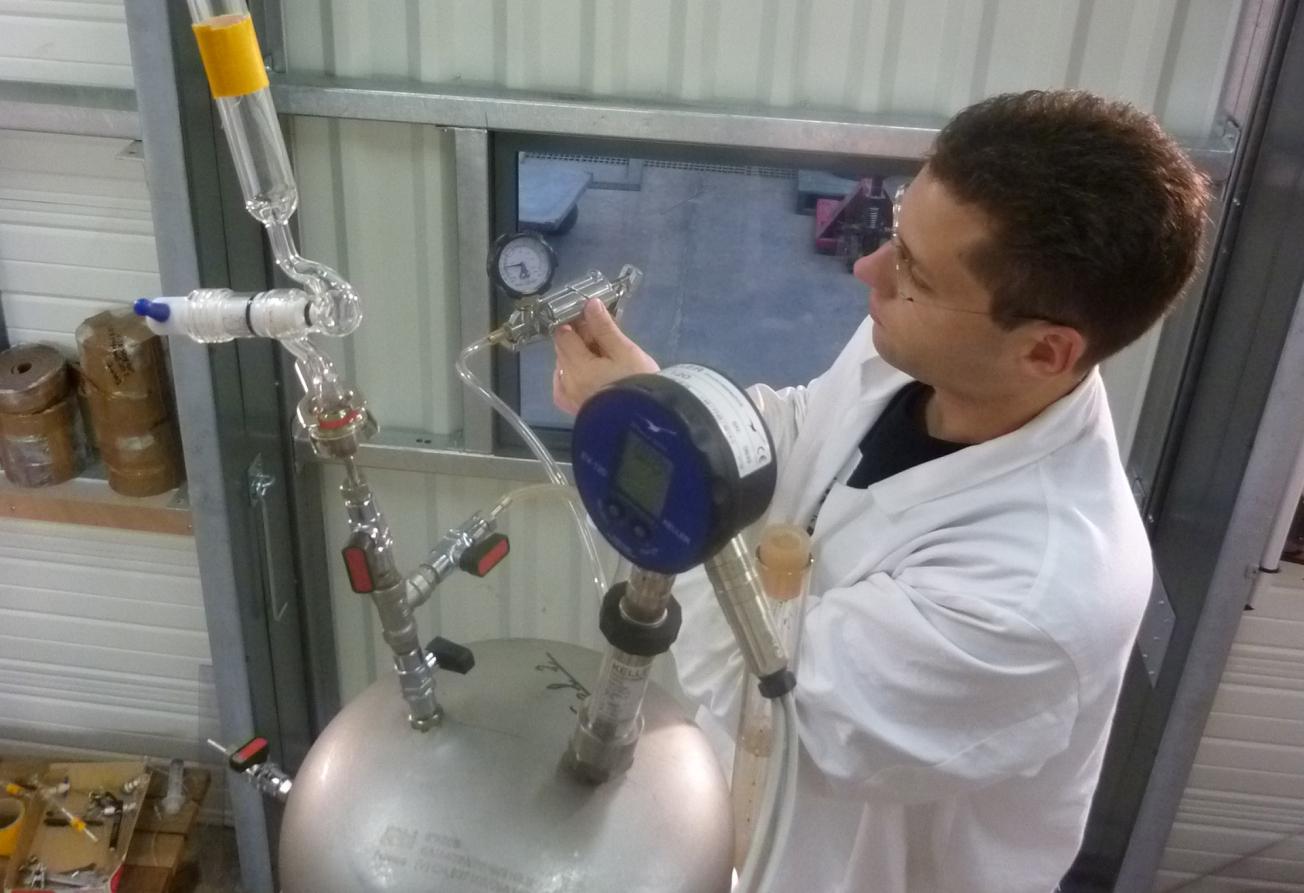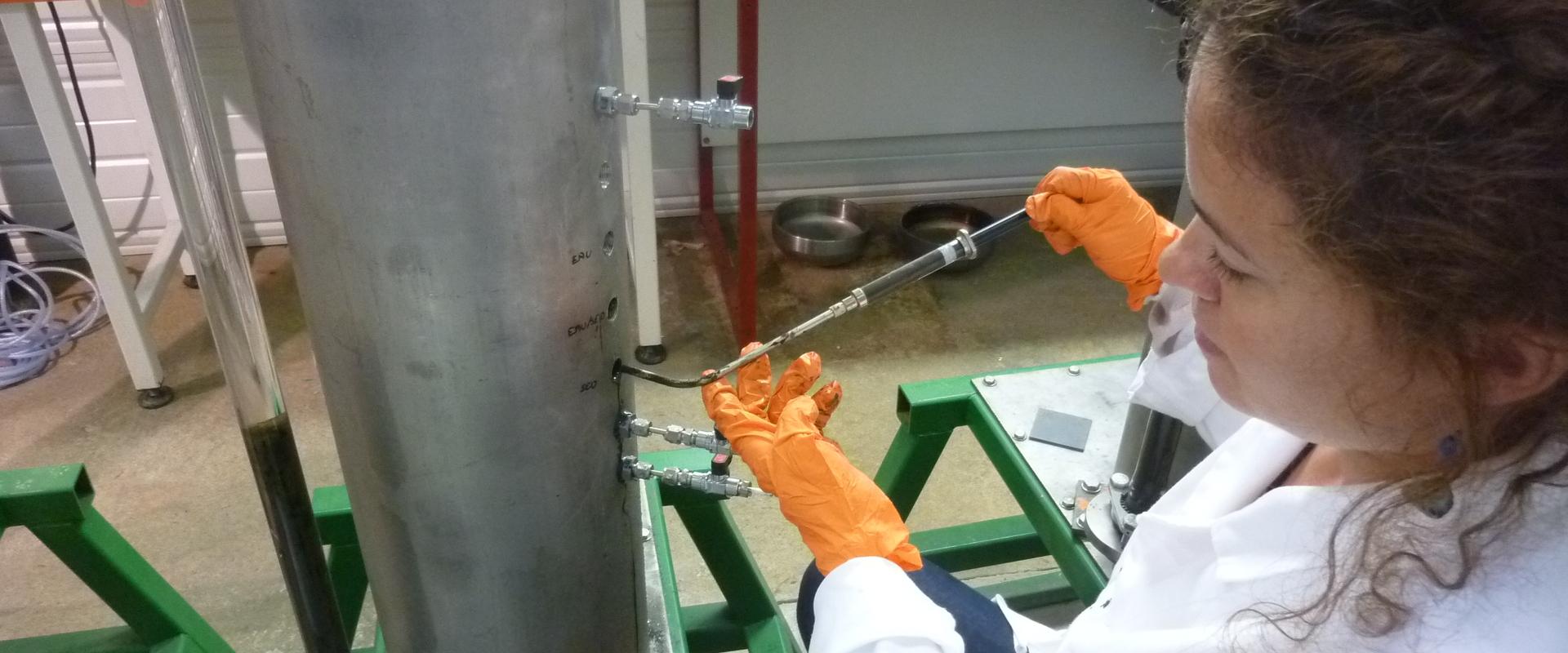
Gas sampling at the column outlet during a resuspension experiment of PCB contaminated sediments (2010).
© BRGM - Philippe Bataillard
Polychlorobiphenyls, which are chlorinated chemical products with insulating, thermal and fire-resistant properties, were widely used in the manufacture of electrical transformers and hydraulic equipment until they were banned in 1987. However, decades of industrial effluent releases have caused massive pollution of river sediments, the most emblematic case being the Rhone, where professional fishermen were banned from marketing their catches in 2006.
Targeted treatment of millions of m3 of sediment
To control these highly toxic substances, which do not degrade in water, BRGM has been involved for several years in the PCB-Axelera programme, backed by the Rhone-Alpes “Chimie-Environnement” competitiveness cluster and aiming to apply targeted treatment to several million m3 of sediments.
Characterisation and understanding of the behaviour of polluted sediments, environmental monitoring, separation treatments and development of biodegradation processes are some of the lines of research that are now well under way.
One of the aims Sedica, the most recent programme, lasting 36 months and involving BRGM with academic partners (Ircelyon and IFS) and industries (Soletanche-Bachy and Extract Ecoterres), is to demonstrate the effectiveness and reliability of applying activated carbon in situ to adsorb and thereby “trap” the PCBs contained in sediments.
Biofilm, a potential natural ally
While the high PCB adsorption capacities of activated carbon quickly became apparent, a problem remained: the formation, as anticipated, and the possible effects of a biofilm on the surface of the activated carbon, due to the micro-organisms present in polluted sediments.
To find out whether the formation of this biofilm would be an obstacle to the transfer of PCBs in the activated carbon, the BRGM recreated natural conditions in the laboratory, where it was observed that a film of mature bacteria did indeed form within about a month. The behaviour of the carbon colonised by the biofilm was then monitored.
The first results showed that the PCB adsorption capacities of the activated carbon were not affected in any way by the presence of a biofilm. These studies should also show whether the formation of a biofilm potentially containing micro-organisms involved in the biodegradation of PCBs may improve the overall efficiency of the process, by combining PCB adsorption in activated carbon with their degradation by the bacteria present. Research at pilot facilities will be conducted by other project partners to determine the potential for full-scale application of the process.







